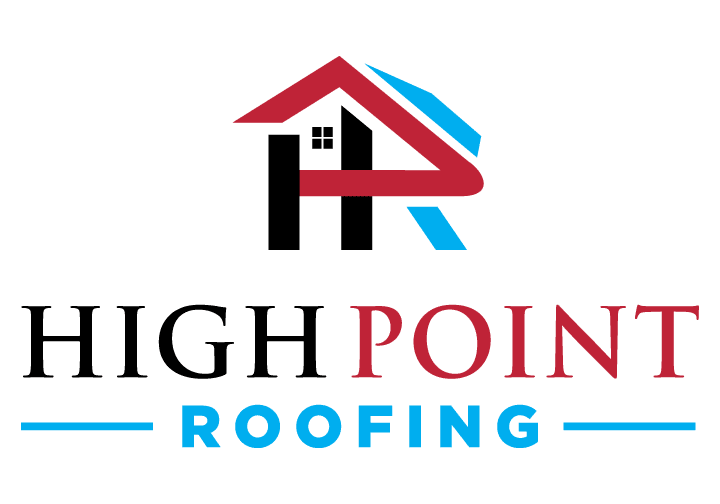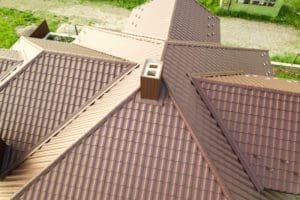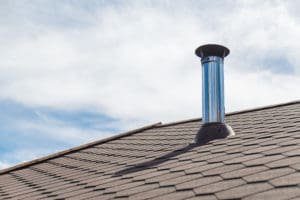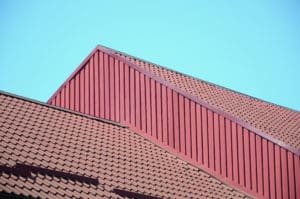Protecting Your Roof and Siding from Hail Damage: Repair Tips
At High Point Roofing, we understand the destructive power of hailstorms and their potential to harm your roof and siding. In this article, we’ll delve into the impact of hail on these essential elements of your home and provide valuable insights into prevention, repair, and insurance considerations to ensure your property remains well-protected. When we are done, you’ll know everything there is to know about protecting yout roof and siding from hail damage
Understanding Hail Damage
Hailstones form when powerful thunderstorm updrafts lift raindrops into extremely cold atmospheric regions, freezing them into ice pellets. These hailstones can range in size from small peas to large golf balls or even bigger, posing a significant threat to your property.
So, what exactly happens when these hailstones collide with your roof and siding? Let’s explore the impact of hail on these vital components of your home.
The Impact of Hail on Roofs
Hail can have a devastating effect on your roof. As hailstones strike the roof’s surface, they can dislodge or damage the protective granules on asphalt shingles, exposing the underlying layers to the elements. This can lead to accelerated wear and tear, resulting in leaks and structural problems.
Moreover, the sheer force of hailstones can compromise the structural integrity of the roof. In some cases, hail impact may even cause fractures or cracks in the roofing material, diminishing its ability to shield your home from water infiltration.
It’s essential to note that the extent of the damage depends on various factors, including the size and density of the hailstones, the angle and speed of impact, and the condition of your roofing materials. While some hailstorms may cause minor cosmetic damage, others can leave your roof in dire need of immediate attention and repair.
How Hail Affects Siding
Siding is also susceptible to considerable damage from hail. The impact of large hailstones can crack or puncture the siding material, rendering it weak and vulnerable. Additionally, hail can leave unsightly dents and dings on the surface of vinyl or metal siding, diminishing your home’s aesthetic appeal.
Furthermore, the damage inflicted by hail can extend beyond what’s visible. When siding sustains damage, it can allow moisture to seep into the underlying layers, leading to rot, mold, and other moisture-related issues. This not only weakens your home’s structural integrity but also poses health risks to its occupants.
Different siding materials exhibit varying degrees of resistance to hail damage. While materials like fiber cement or brick may offer more resilience, others, such as vinyl or aluminum, may be more susceptible to hail impact. Understanding your siding material’s vulnerabilities can help you assess potential risks and take appropriate measures to safeguard your home.
In conclusion, hailstorms have the potential to wreak havoc on your roof and siding, causing extensive damage that transcends mere cosmetic issues. It’s imperative to gain a comprehensive understanding of the impact of hail on your property and take proactive measures to mitigate risks. Regular inspections, prompt repairs, and investment in hail-resistant materials can collectively shield your home from the destructive forces of hail.
Preventive Measures for Hail Damage
Although it’s impossible to completely prevent hail damage, certain measures can help minimize its impact on your roof and siding.
Choosing Resilient Roofing Materials
Selecting the right roofing materials can significantly reduce the risk of hail damage. Opt for impact-resistant shingles specifically designed to withstand hailstones of varying sizes. These shingles are typically constructed from robust materials like fiberglass or asphalt, fortified with additional protective layers.
Additionally, consider the slope of your roof. A steeper slope can deflect hailstones, reducing their impact on your roof. Collaborate with roofing professionals to determine the optimal slope for your location and weather conditions.
Regular roof inspections and maintenance are crucial for identifying weak points or damage that may make your roof more susceptible to hail damage. Addressing these issues promptly can prevent further damage and prolong your roof’s lifespan.
Protective Measures for Siding
Shielding your siding entails installing impact-resistant siding materials. Explore options like fiber cement, engineered wood, or metal siding, renowned for their capacity to withstand hail. These materials are engineered to absorb hailstone impact, minimizing the risk of cracks, dents, or other damage.
In addition to choosing the right siding material, proper installation is paramount. Enlist the services of a professional siding contractor experienced in installing impact-resistant siding to ensure secure installation and optimal protection against hail damage.
Furthermore, the installation of storm shutters or hail guards can provide an extra layer of defense for your home’s exterior. Storm shutters are designed to cover windows during severe weather events, including hailstorms, preventing hailstones from shattering glass and causing interior damage. Hail guards, meanwhile, are mesh screens that can be installed over vulnerable areas like windows, skylights, or outdoor equipment, deflecting hailstones and reducing damage risk.
Regular maintenance of your siding is equally essential to prevent hail damage. Conduct frequent inspections to identify signs of wear, cracks, or loose panels. Addressing these issues in a timely fashion can prevent further damage and secure your siding’s longevity.
Implementing these preventive measures can significantly reduce the risk of hail damage to your roof and siding. While initial investments may be required, the long-term savings and peace of mind are undoubtedly worthwhile. Always remember the importance of preparation and proactive measures to safeguard your home from nature’s unpredictable hailstorms.
Identifying Hail Damage on Your Roof and Siding
Following a hailstorm, it’s imperative to inspect your roof and siding diligently for any signs of damage. Taking prompt action can prevent further deterioration and costly repairs down the road.
Signs of Roof Damage
Examine your roof for missing or cracked shingles, dents or dings on metal roofing, and granule loss on asphalt shingles. Inside your home, be vigilant for indications of leaks or water stains on ceilings or walls. If you detect any of these signs, it’s advisable to contact a professional roofing contractor for a comprehensive assessment.
Indicators of Siding Damage
Inspect your siding for cracks, punctures, or dents inflicted by hailstones. Additionally, check for gaps or loose panels that may have been dislodged during the storm. If you notice any such damage, consult a siding specialist who can provide guidance on necessary repairs or replacements.
Repairing Hail Damage
Depending on the extent of the damage, you may attempt to address hail damage yourself or require professional assistance.
DIY Repair Tips for Minor Damage
For minor roof or siding damage, you can undertake repairs independently. Start by replacing damaged shingles or siding panels. However, remember to adhere to proper safety precautions and consult manufacturer guidelines before commencing any repair work.
When to Call a Professional
In cases of extensive hail damage or if you are uncertain about your ability to perform repairs, it’s wise to seek professional help. Roofing and siding experts possess the knowledge, experience, and tools to accurately assess damage and execute necessary repairs or replacements promptly.
Insurance and Hail Damage
When dealing with hail damage, understanding your insurance coverage is pivotal to simplifying the claims process and minimizing out-of-pocket expenses.
Understanding Your Coverage
Reach out to your insurance provider to review your policy and ascertain the extent of coverage for hail damage. Ensure you possess all requisite documentation, including photographs and records of the damage, along with detailed repair or replacement estimates.
Filing a Hail Damage Claim
If your policy encompasses hail damage, promptly file a claim with your insurance company. Furnish them with all necessary information and documentation. It may be beneficial to obtain multiple quotes from reputable contractors to substantiate your claim and guarantee a fair settlement.
In conclusion, protecting your roof and siding from hail damage necessitates a blend of preventive strategies, regular inspections, and timely repair efforts. By comprehending the impact of hail, selecting durable materials, and addressing damage promptly, you can fortify your home against the unpredictable forces of hail. Additionally, acquainting yourself with your insurance coverage and promptly filing a hail damage claim, when necessary, will facilitate a smooth restoration process. Maintain a proactive stance to safeguard your roof and siding, even when facing the formidable nature of hailstorms. High Point Roofing is here to assist you in securing your home with our expert roofing services.





